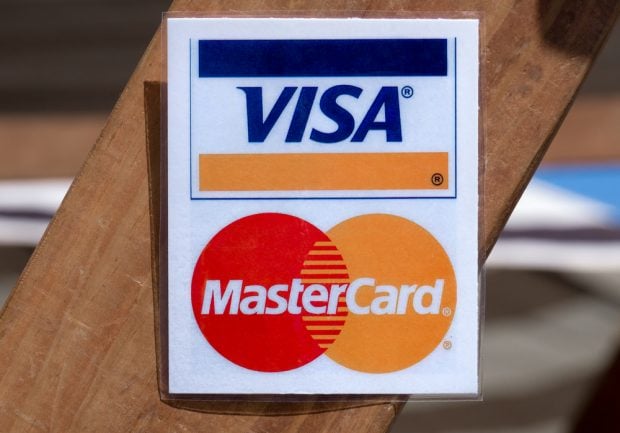Law firms seeking relatively easy settlements have helped fuelthe numbers of lawsuits against both credit unions and communitybanks over alleged failures to comply with ATM regulations.
|One of the latest CUs to have been caught in the ATM litigationweb is the 36,000-member LA Financial Credit Union, a federallychartered CU headquartered in Pasadena, Calif. Class actionlitigation that charged the CU's ATMs violated contract law wrappedup last week.
|According to court documents and the plaintiff's counsel, LAFinancial agreed to pay people who had made transactions at its sixATMs between May 5, 2007 and May 28, 2009 at least 50 cents plusinterest, per person, per transaction, but no more than $10.
|The settlement amount in any case will not exceed the $33,889that the CU has placed into a court-administered escrow account,according to the settlement order and Michael Martinez, a lawyerwith Martinez & Charles, a Pasadena law firm that representedplaintiff Dennis Minkler.
|Other press reports had placed the settlement account at $10million.
|“If everyone who made a transaction at one of the ATMs comesforward, they will all get 50 cents plus interest. If fewer comeforward, they will get more, but the amount per person will becapped at $10,” Martinez said.
|“We didn't want to give anyone a huge windfall from this. Wethought $10 from a 50-cent transaction was enough of a windfall,”he said.
|According to the settlement documents, the law firm will receive$8,000 and Minkler $1,000 as part of the settlement.
|Minkler sued the credit union in 2010, alleging that he had beencharged $2.00 for withdrawal at one of the credit union's six ATMswhen the sign on the machine said the cost would be $1.50.
|The credit union did not return calls for comment as of presstime.
|Legal sources said these sorts of cases often come in waves andare often sparked by law firms that see ways to obtain fairly easymoney from credit unions and community banks that will settle thecases rather than fight them. In most cases, the plaintiffs andmembers of the class generally make only small amounts ofmoney.
|CUNA Mutual reported that ATM litigation specifically aimed atCUs over alleged violations of the Federal Reserve's Regulation Ehas snared 44 CUs in 14 states as of June 30.
|Regulation E requires that credit unions and other ATM deployersboth post notices on their machines that a fee may be required if acardholder from another financial institution makes a withdrawal orchecks a balance at the ATM and disclose the fee amount to thecardholder before they are committed to paying it.
|“The lawsuits typically involve missing signage on or at the ATMand incorrect fees disclosed on the sign at the ATM,” said BradMundine, CUNA Mutual senior manager of credit union protection riskmanagement. “In addition, many of the lawsuits involve remote ATMsserviced by third-party vendors. Many credit unions involved in thelawsuits erroneously believed the fee notice sign was not necessarysince the fee was disclosed on the terminal screen of the ATM.”
|One legal expert, speaking on background, recounted how one lawfirm in his area filed 24 such lawsuits against banks and other ATMdeployers in his area and garnered roughly $10,000 a piece fromeach of them. “Litigation is very expensive,” the attorney noted,and a financial institution can feel fortunate to be able to settlea case for relatively little money, but taken as group the lawyersdo fairly well.
|CUNA Mutual laid the responsibility for many of the casesinvolving alleged Regulation E violations on a “retired Michigancouple” that, according to reports CUNA Mutual cited, has “combedthe state” searching for out of compliance ATMs whose deployerscould be sued. This couple has filed 40 lawsuits against CUs in 18months, the insurer reported.
|“The sad thing is that almost all of these lawsuits areavoidable,” said Andy Keeney, partner in the Norfolk, Virginia firmof Kaufman and Canoles, who serves as general counsel for a numberof credit unions. “If credit unions take some simple steps, theycan protect themselves from many of these cases.”
|Keeney and CUNA Mutual recommended that creditunions review and inspect their ATMs regularly for compliance. Toprotect themselves from Regulation E violations, credit unionsshould post signs that indicate that users of the ATM that are notaccount holders will or may face fees for withdrawals and balanceinquiries.
|The rule does not require the credit union to post the exactamount of the fee on the sign, CUNA Mutual said, though it doesrequire the user be notified of the exact fee amount before theycommit to the transaction.
|The most handy time for such inspections, CUNA Mutual said, iswhen the CU is serviced, a weekly occurrence at many CUs. Theinsurer recommended as well that the inspection process includetaking a digital picture of the ATM and keep a log of theinspections. Doing so will help the credit union defend itself incourt against potential lawsuits, CUNA Mutual said.
|The log should include the location of the ATM inspected, thedate of the inspection, whether the fee notice is present, whetherany action (such as replacing the sign) was taken and theidentification of the employee conducting the inspection.
|The credit union should also consider giving the inspector asupply of new disclosure stickers so that the employee could easilyreplace any damaged, defaced or missing notices.
Complete your profile to continue reading and get FREE access to CUTimes.com, part of your ALM digital membership.
Your access to unlimited CUTimes.com content isn’t changing.
Once you are an ALM digital member, you’ll receive:
- Critical CUTimes.com information including comprehensive product and service provider listings via the Marketplace Directory, CU Careers, resources from industry leaders, webcasts, and breaking news, analysis and more with our informative Newsletters.
- Exclusive discounts on ALM and CU Times events.
- Access to other award-winning ALM websites including Law.com and GlobeSt.com.
Already have an account? Sign In
© 2024 ALM Global, LLC, All Rights Reserved. Request academic re-use from www.copyright.com. All other uses, submit a request to [email protected]. For more information visit Asset & Logo Licensing.









